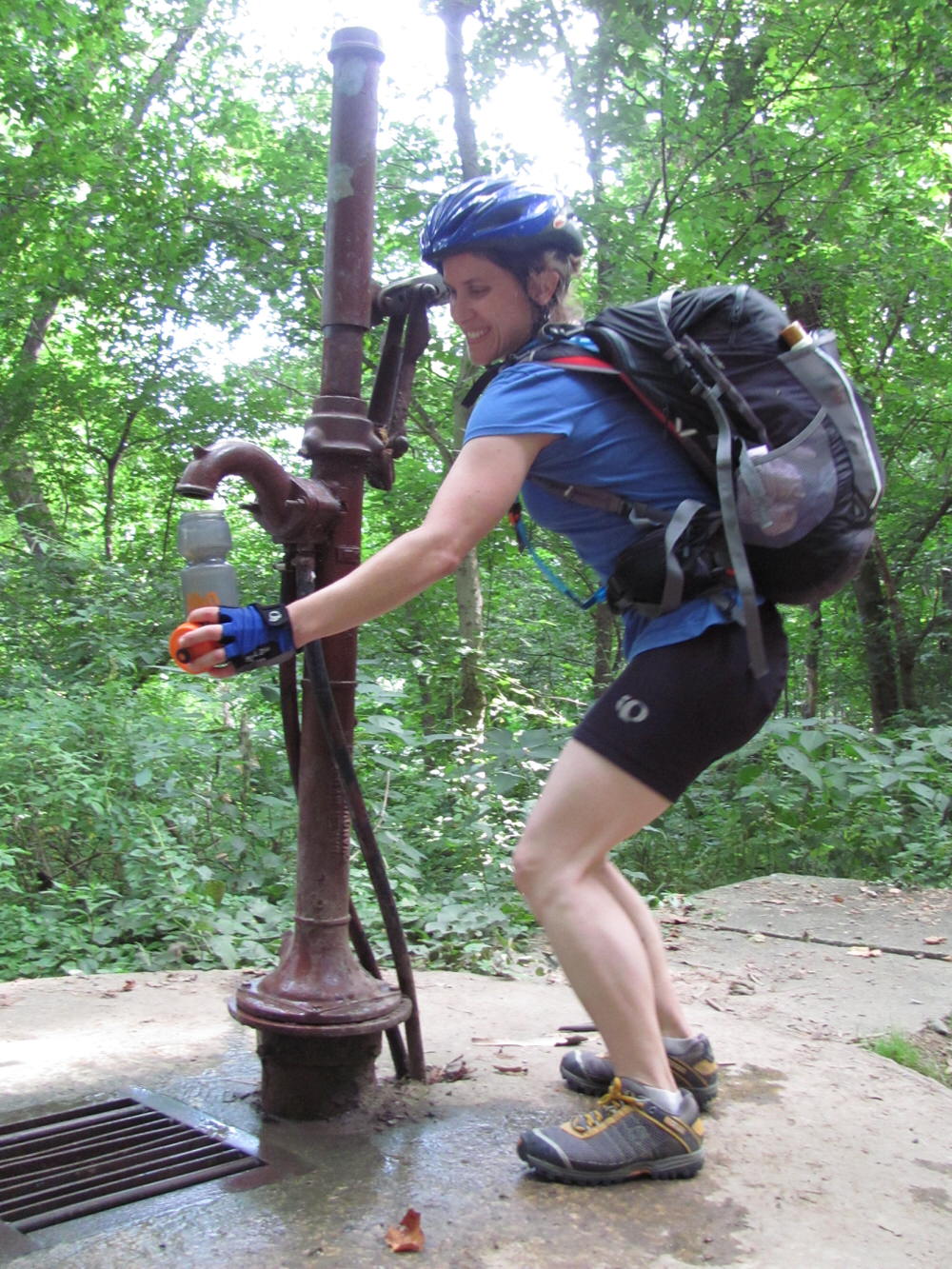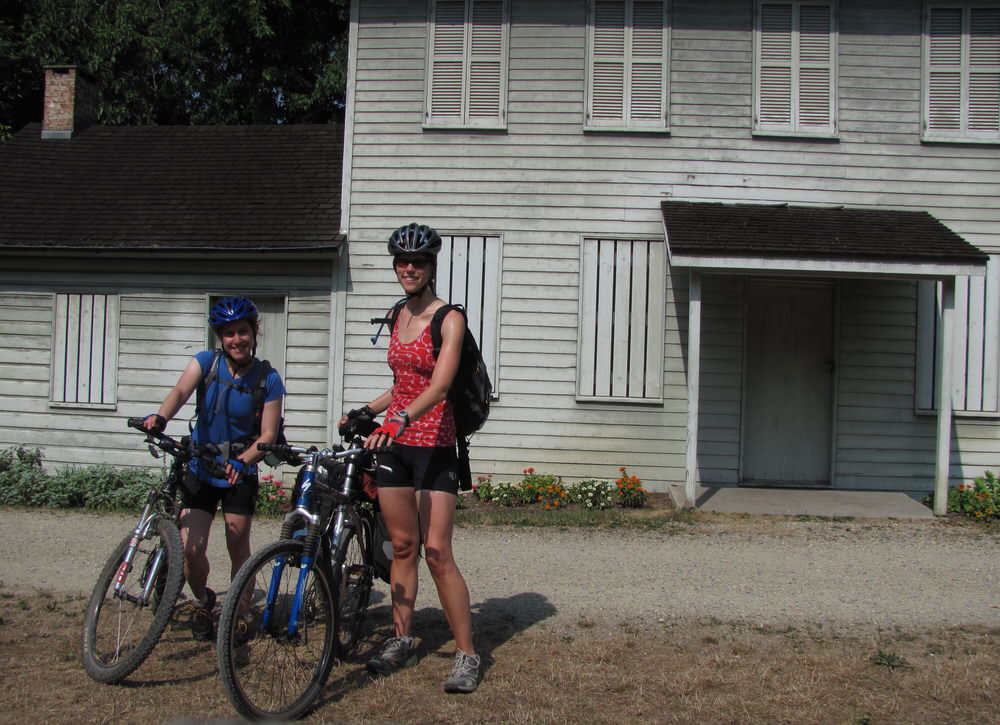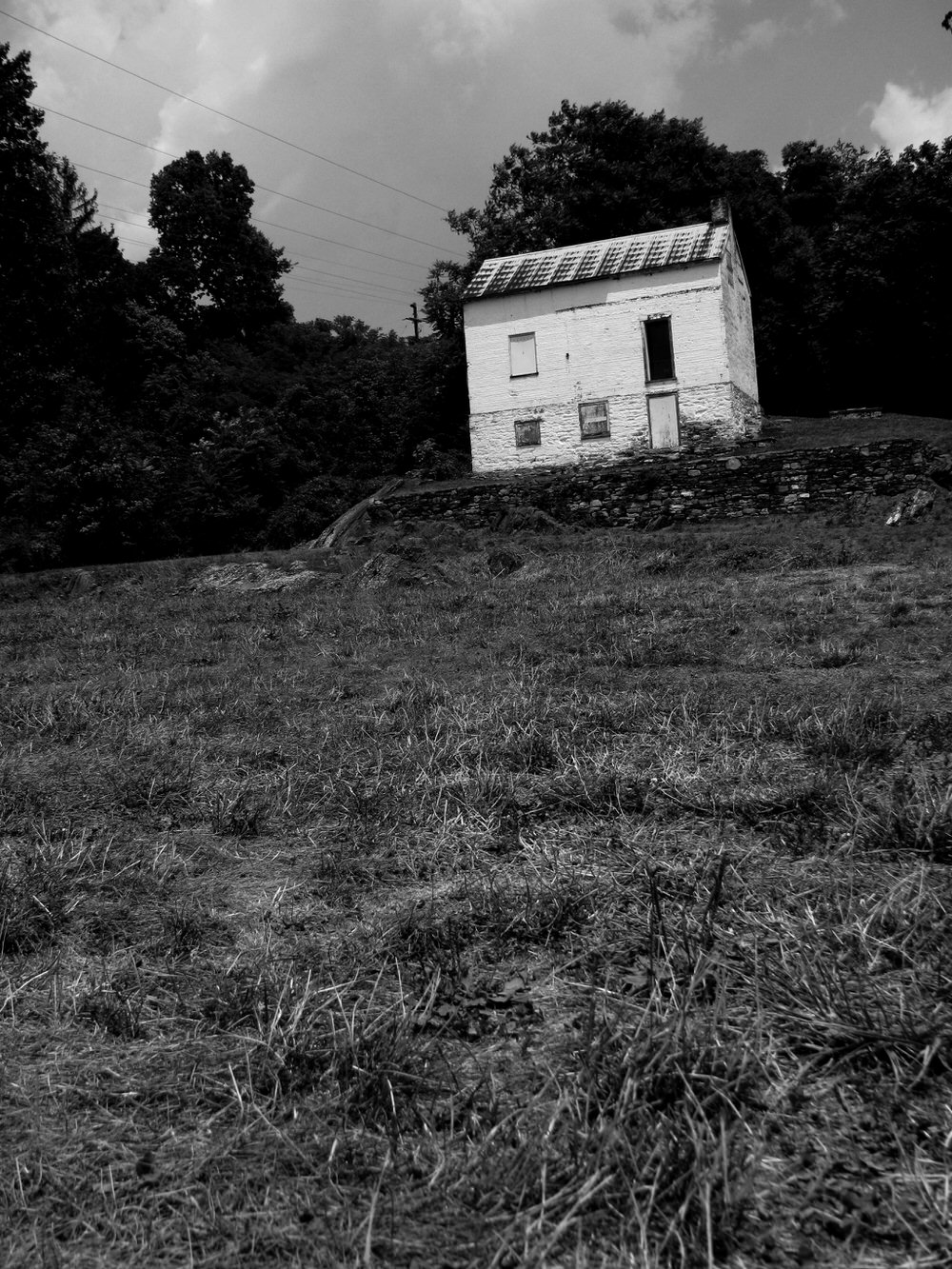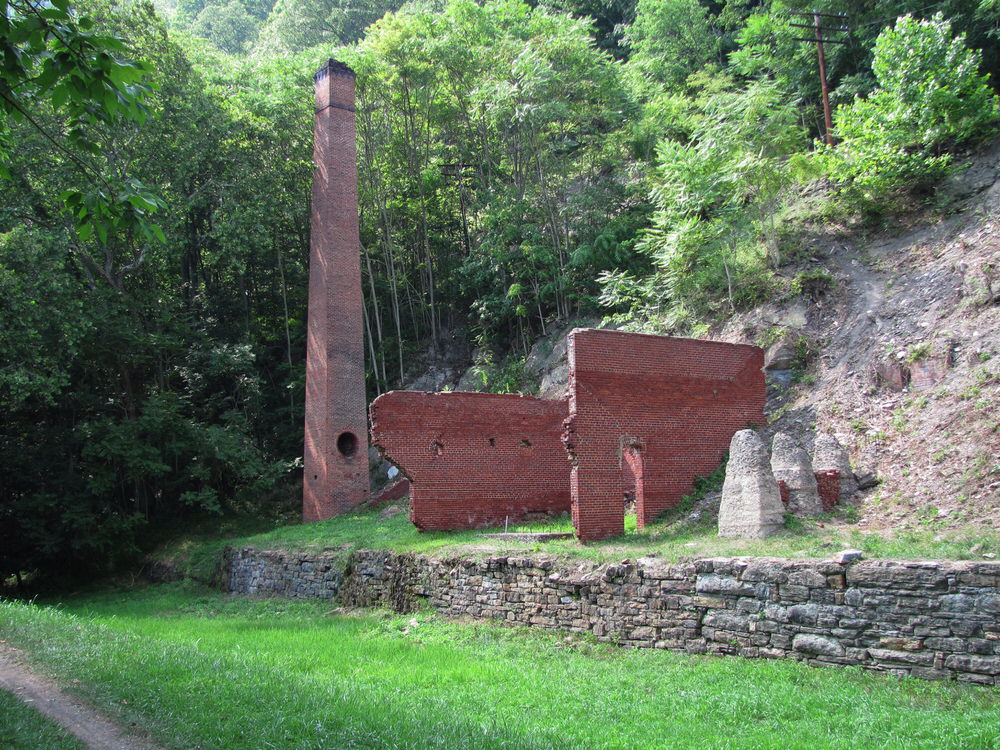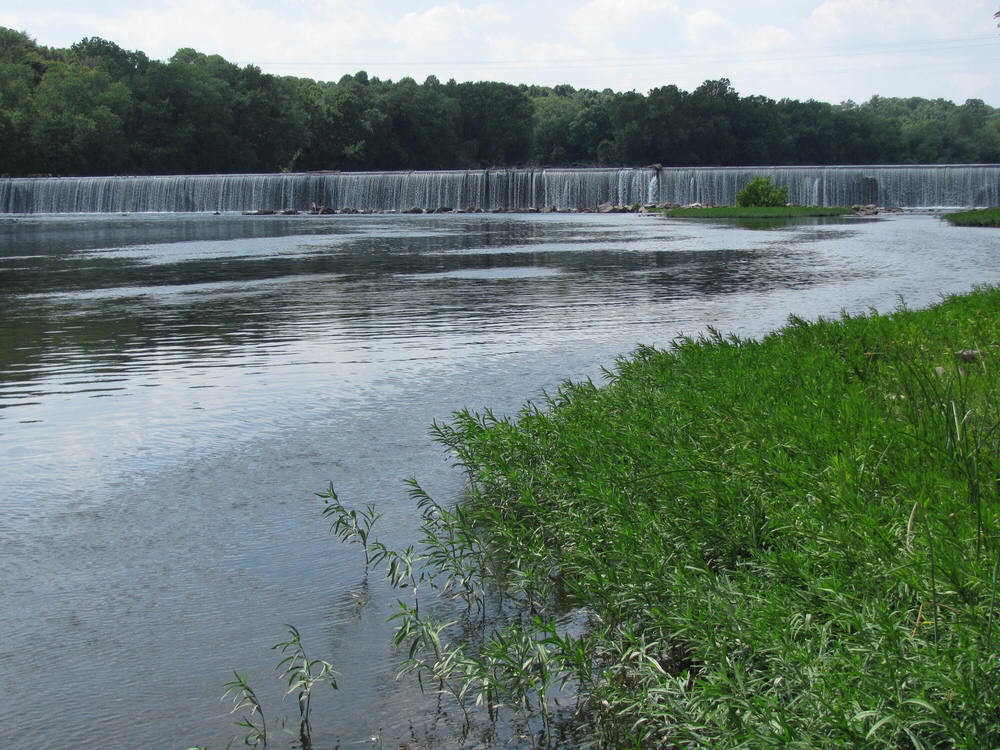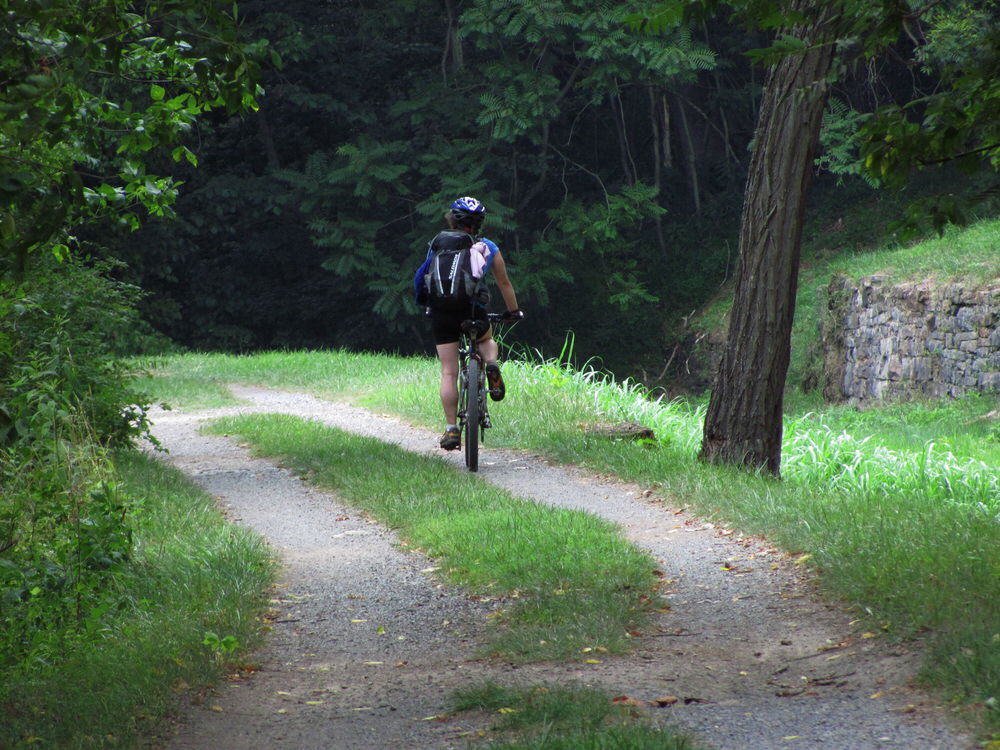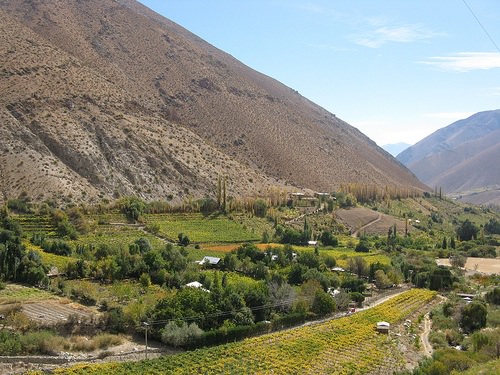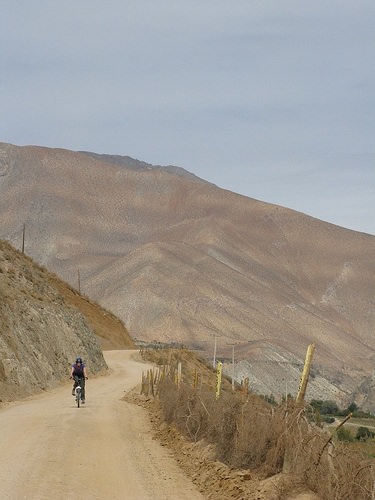Abby and me, taking a break in the shade outside Hancock, Maryland
A wave of nearly 100-degree heat hit me as soon as I opened the door of my car in Harpers Ferry, West Virginia to assemble my bike for a four-day bike-packing trip along the Chesapeake and Ohio Canal Towpath with my friend Abby. Pedaling my bike along the bank of the Potomac River in the days following, sweat covered my skin; strips of dirt stuck to the sunscreen on my shins; I craved water, Gatorade, ice cubes — anything to cool me down; and I had to constantly fight the urge to steer my bike off the trail and plunge headfirst into the river.
But putting up with the swelter was well worth the discomfort. The trail, which runs 184.5 miles from Washington, D.C. to Cumberland, Maryland (map here), where it hooks up with the 150-mile Great Allegheny Passage Trail to Pittsburgh, parallels the river under a canopy of trees for most of its length. Along the way, it passes a number of Civil War battle sites, stone aqueducts and locks and historic wooden structures with brittle, peeling paint. It's a beautiful trip — and, if you read any of the signs along the way (we did, sometimes), an educational one.
President John Quincy Adams ordered the canal built on July 4, 1828 to move goods from the Ohio River to Georgetown. But by the time it was completed in 1850, it was already obsolete; railroads had taken over. More than a century later, in 1971, Supreme Court Justice William Douglas convinced the government to establish the Chesapeake and Ohio Canal National Historical Park.
We set off from Harpers Ferry, site of numerous Civil War battles and abolitionist John Brown’s unsuccessful raid on the armory, late one afternoon and rode about 25 miles before setting up camp in a small clearing, the Big Woods site, with three 50-something men who used to work together for the Department of Fish and Wildlife. Over the next three days days, we rode to the tiny town of Little Orleans, MD (pop: less than 100) and back to our starting point, along the way, learning a number of very important lessons. Here they are, in no particular order:
- Test your bike setup in advance. Abby returned from a three-week trip to Peru two days before we left on our journey and didn’t get a chance to check her bike until the day we were set to leave. She discovered, at this last minute, that her panniers wouldn’t attach to her carbon-framed bike and that carrying a 50-pound load on her back was not a realistic way to tackle the trail. We considered various options, then elected to ditch the stove and all foods that required cooking (adios, rice and pasta; hello Cliff bars and sauces a la carte!), pack the big stuff in my panniers and cram the remainder in Abby’s backpack. It worked out just fine (right, Abby?!).
My bike, with lots of junk in its trunk
- Stay hydrated. Over the years, I have learned that dehydration is the devil — quite literally, the root of all evil. It can make perfectly well-adjusted people turn downright mean and cause unpleasant physical side-effects, like uncontrollable shaking. We refilled our water bladders and bottles at the creaky metal water pumps we passed every 10-15 miles. The water, which sometimes took a minute of pumping to draw up from underground, tasted slightly metallic, but was still refreshing (note: Gatorade powder was a great way to disguise the taste). We discovered that soaking a rag under the pump and wringing it over our heads, sending streams of cool water down our scalps and over our shoulders, was a refreshing use of water as well.
I should be helping.
- Secure your foodstuffs. We left our food lying on the ground in a sealed blue stuff-sack our first night on the trail and in the morning, found it off in the trees 50 feet away from camp, covered in dirt and roughed up a bit. Something (I'm calling it: a 'coon) had chewed a hole in the side, pulled the plastic bag of high-fiber bagels out the small opening and devoured — or at least gnawed — the majority of the contents. Opening the stuff sack from the top, we discovered untouched Cliff bars and packets of spinach dal sauce amidst pieces of chewed bagel and plastic bag.
The casualties of our lax food storage system
- Don’t over-plan. We found campsites every 10 or so miles along the trail (many of which don’t take reservations) and were happy to discover that our lack of route planning was actually an asset. We liked the flexibility of being able to decide on a day-to-day basis how far to ride, based on the condition of our legs and what we could eat in various locations.
- Don’t run over the wildlife. I came within centimeters of beheading a black snake draped halfway on the trail and almost ran over two turtles, a frog and a dead but still three-dimensional songbird. I also hit a butterfly, but it didn't seem phased. Fortunately, I was able to swerve at the last of many minutes to avoid the trauma of exploding animals.
Turtles taking a break from the green stew
A survivor
- Take in the history. The trail is packed with remnants of the past. Pausing to poke around the old buildings and canal structures gives you a sense of what the area was like more than a century ago, when the Civil War was but a twinkle in our nation's eye.
Somehow, I dwarf everything in this picture
A concrete factory destroyed thrice by fire
- Visit Bill. Bill has owned Bill’s Place, a general store, pub and local hangout, in Little Orleans for the last 42 years — “more than half my life,” he says. Hooked to a respirator, the old man works the dark wooden bar every day, unwinding the incredibly long plastic tube of his breathing machine to deliver food and drink to patrons across the room. When we stopped in for a pizza, beer and ice cream dinner on Friday evening, we found Bill eating a buttered piece of corn on the cob inside the bar, alternately chatting with regulars and watching Fox News on the television perched high in the corner. He took our orders, gave us extra “shots” of ice water (the cups were small) and charged a man "eh... $5" for two beers, a cooler and a bag of ice.
- Swim! I gave into the temptation to submerse myself into the Potomac. This spot, right below Dam #5, was a particularly good one: a shore-side beach, moving water (not stagnant is key!) and a brilliant view.
- Be flexible. I’ll admit it; after spending a particularly oppressive night sprawled and sweating on top of the sleeping bags in our tent, we opted to splurge on an air-conditioned stay in the yellow-bricked Candlelight Inn on a main street in Williamsport, MD. We didn't go ALL out, though, dining on a Malaysian Tasty Bites packet and that good ol' spinach dal, both dipped in Pringles, on the floor of our third-story room.
Williamsport from the trail
Yummmm, nothing like uncooked sauces! Not to worry; we followed up with heaping ice cream cones from the corner shop across the street.





